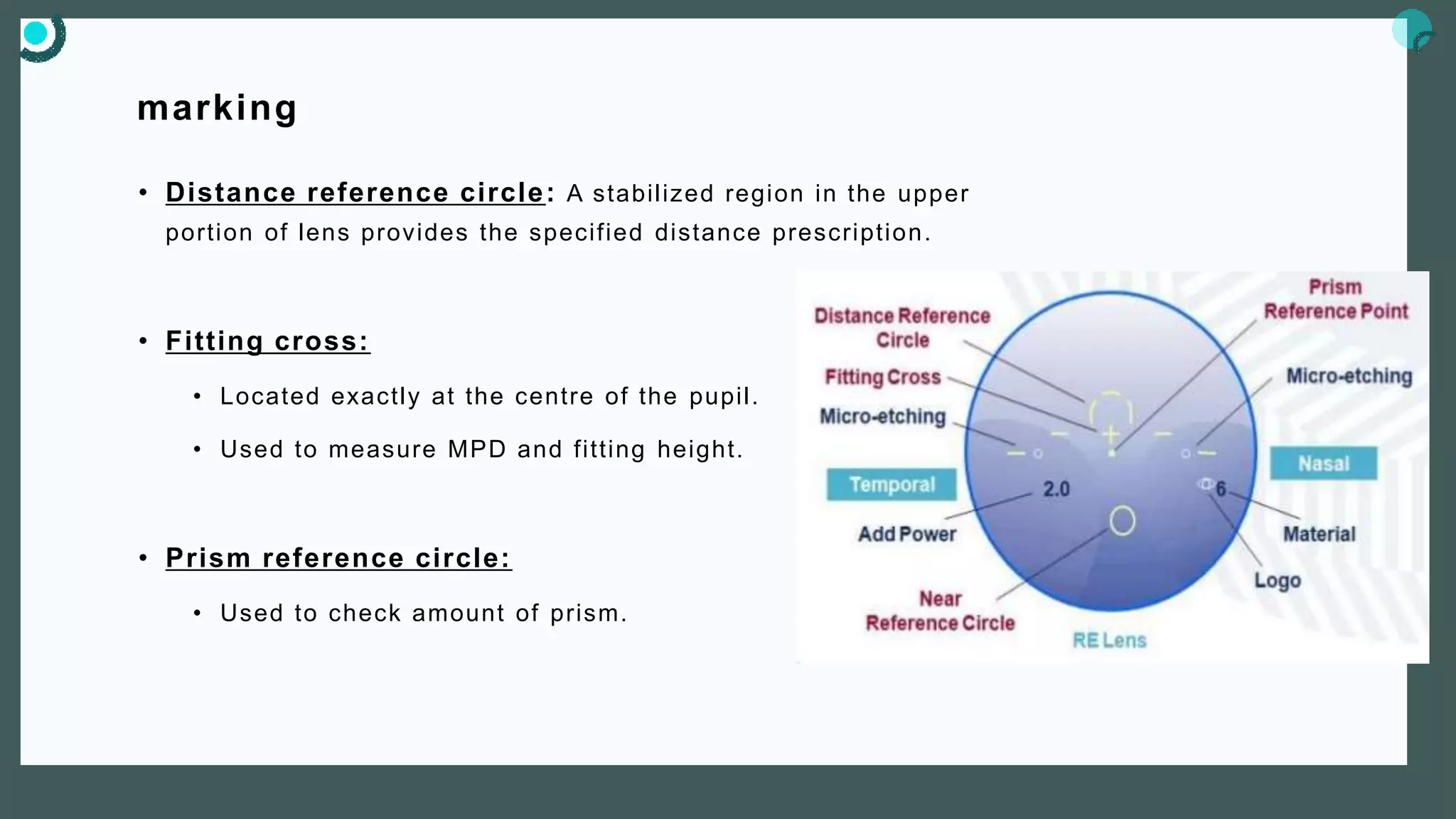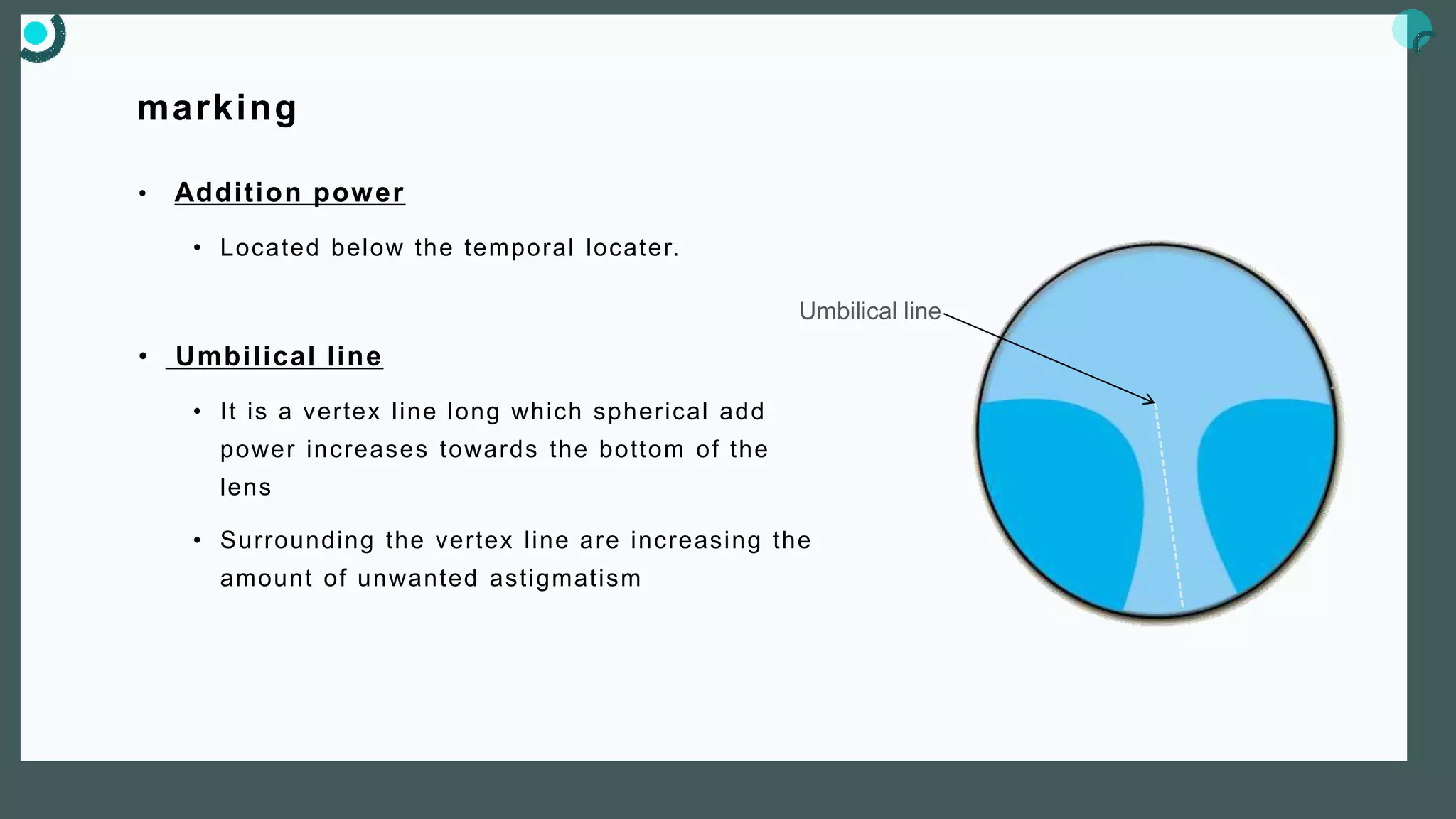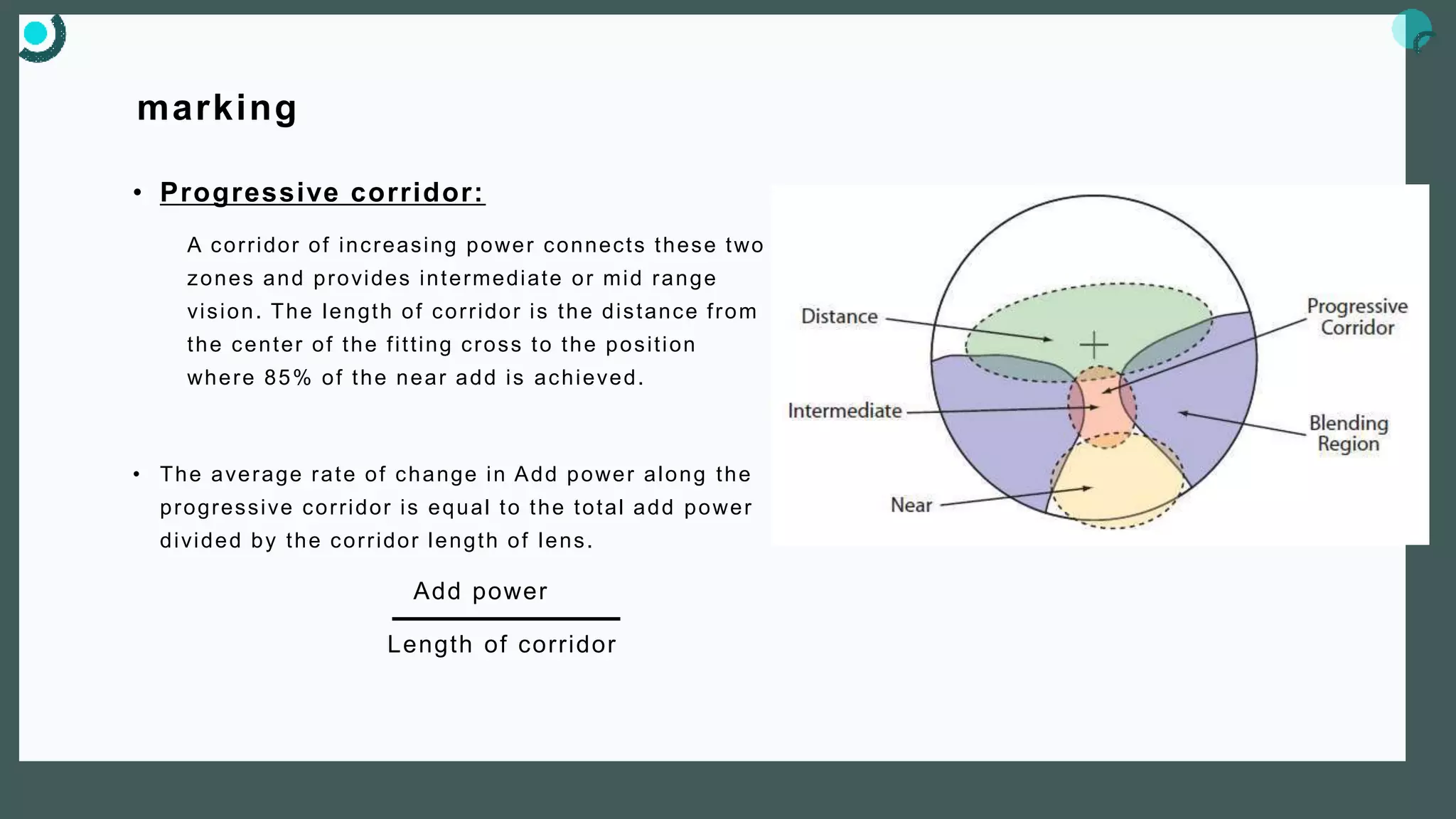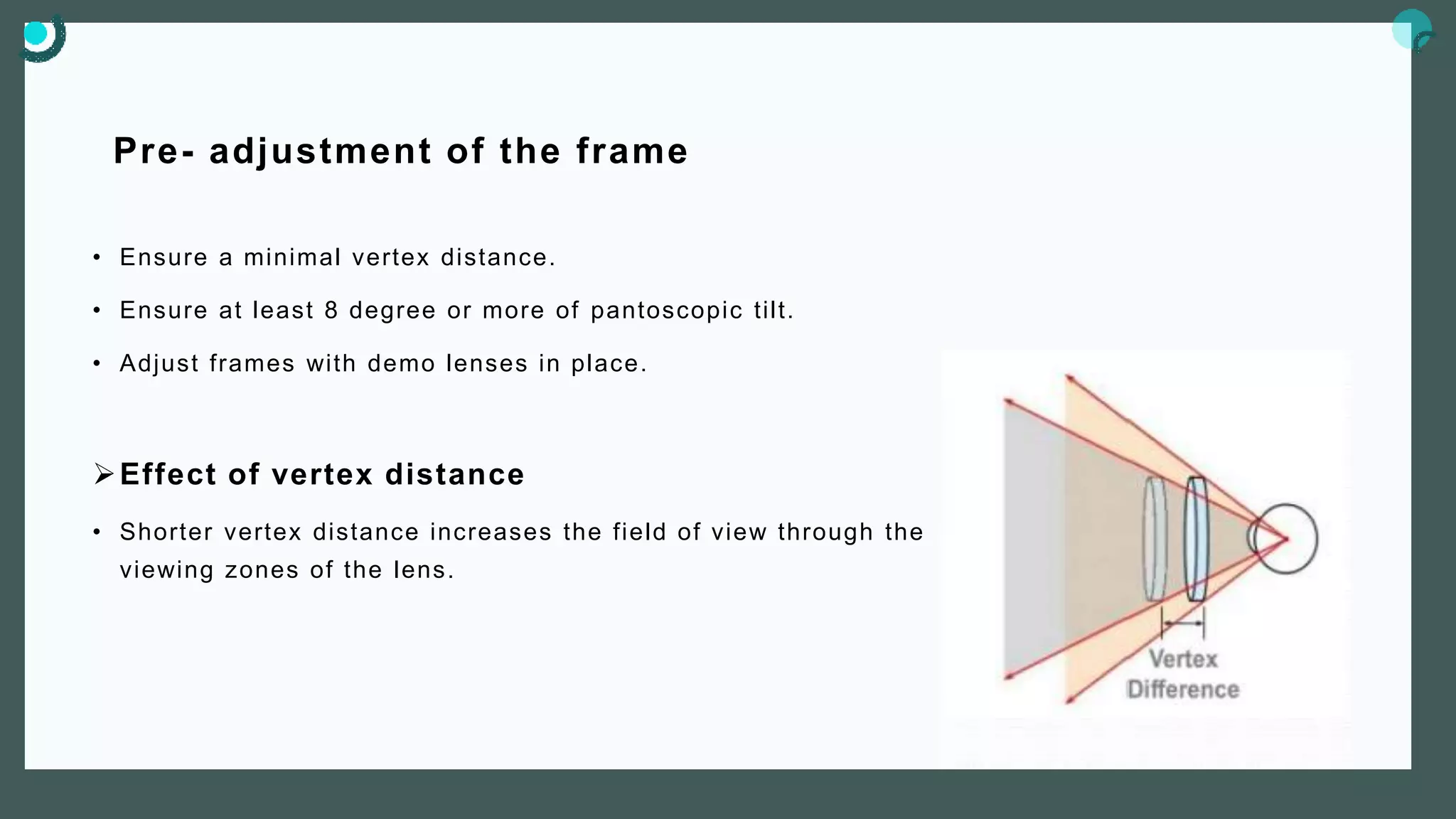El documento detalla las lentes progresivas, descritas como una innovadora solución para la presbicia, que permite una visión continua y sin líneas de separación entre diferentes zonas de enfoque. Se discuten sus características ópticas, el diseño y la adaptación, así como los procedimientos de ajuste y resolución de problemas durante su uso. Además, se enumeran diversas marcas y modelos disponibles en el mercado, destacando sus ventajas y desventajas.






































![CONFIRM MEASURMENT AND PRESCRIPTION
• Using the centration chart ,centered the frame
over the inverted V
• Confirm the monocular PD and fitting height
• Confirm the distance prescription with the
lensometer
• Confirm prism at prism reference point [PRP]](https://image.slidesharecdn.com/progressiveadditionlensesandbrands-200812152358/75/Progressive-addition-lenses-and-brands-39-2048.jpg)
![RECREATE FITTING CROSS [IF NEED]
• Mark the lens micro-circles with a felt tip pen.
• Lay the glasses over the cut out chart and align the micro
circle to the microcircle on the cut out chart.
• Mark the fitting cross with the felt tip pen.](https://image.slidesharecdn.com/progressiveadditionlensesandbrands-200812152358/75/Progressive-addition-lenses-and-brands-40-2048.jpg)































